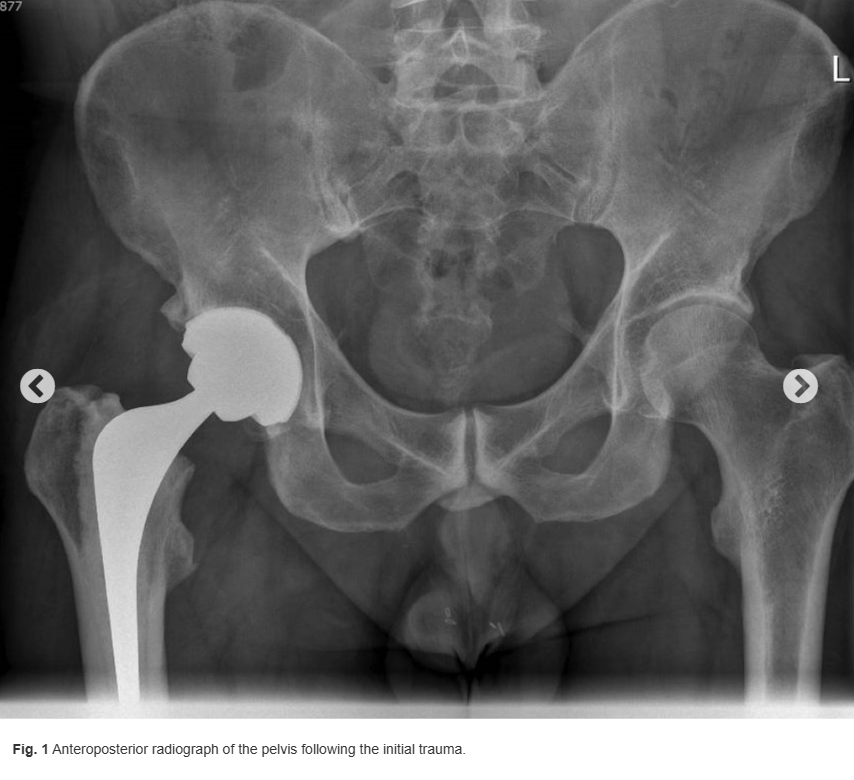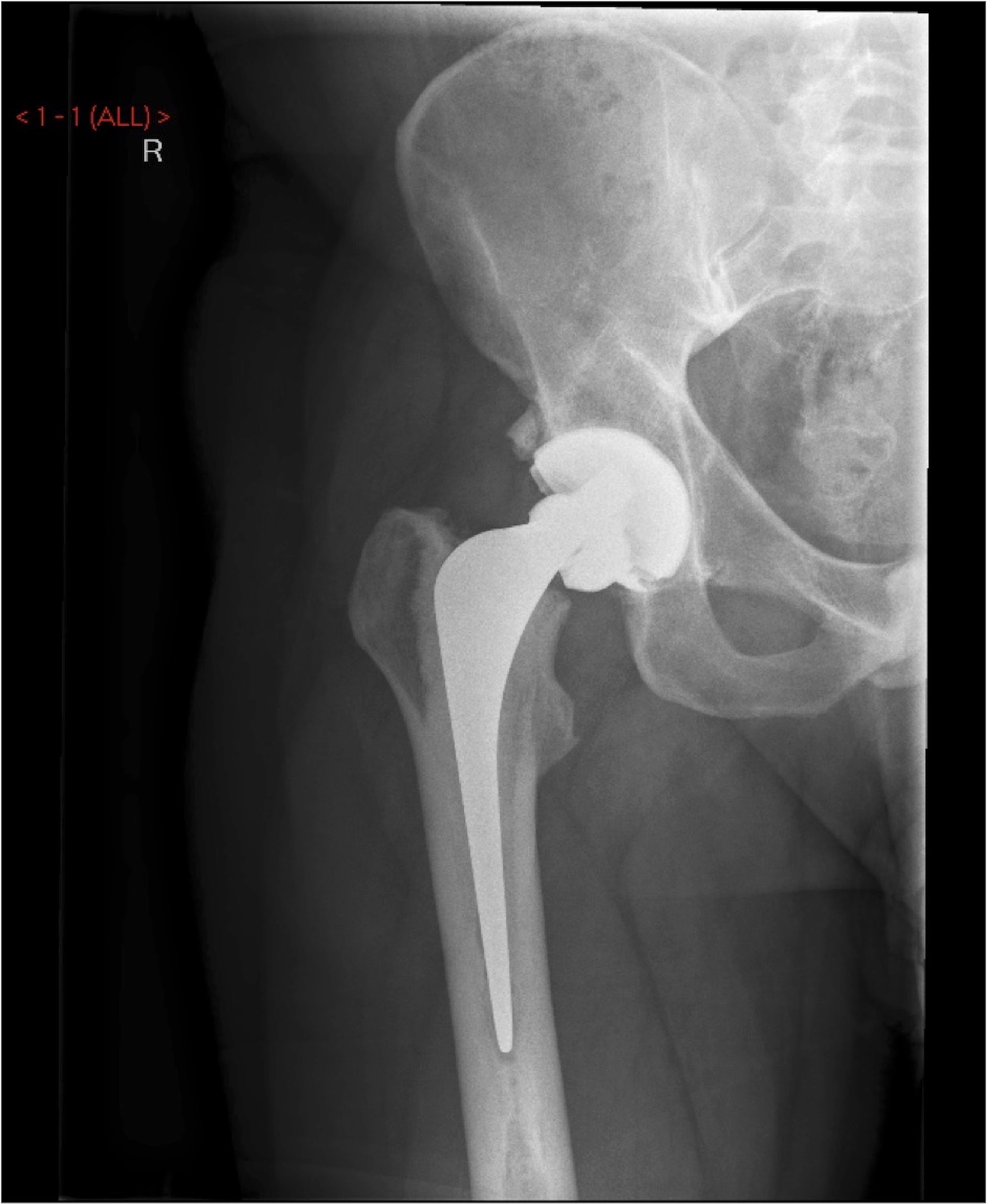A 52-year-old fit and well man with a body mass index of 26 kg/m2 and no medical history underwent right total hip replacement for primary osteoarthritis. Postoperatively, he had an uncomplicated recovery, mobilizing on day 1 and being discharged on day 2, independent on 2 elbow crutches. He was reviewed in the clinic at 6 weeks by the consultant orthopaedic surgeon who performed the operation. At that time, he was mobilizing with relief from pain and unaided and had returned to driving. He had a good range of movement at the hip and had no evidence of a Trendelenburg gait. Radiographs were taken at the time, which showed satisfactory positioning of all implants and equal leg lengths.
At 8 months following the primary surgical procedure, the patient slipped on black ice and fell heavily onto the right hip (trochanteric region). He was able to mobilize immediately afterward while experiencing only minimal pain. He was rereviewed by the operating orthopaedic surgeon within 1 week, and radiographs were taken, which were unremarkable (Fig. 1). The patient returned to normal activities soon after as he experienced pain relief. However, 1 month later, he noticed a sudden sharp pain and a sensation of grinding in the right hip following swimming. He was unable to bear weight and presented to the emergency department.

On examination in the emergency department, the patient had a well-healed posterior approach scar. There was no evidence of infection. He had tenderness to palpation of the groin. Passive and active ranges of movement were unrestricted, and the patient had some pain at 90° of passive hip flexion. He did not experience pain with internal and external rotations, but the examiner noticed palpable crepitus. Blood levels, including erythrocyte sedimentation rate (ESR) and C-reactive protein (CRP), were within normal limits. A radiograph of the hip is shown in Figure 2.



